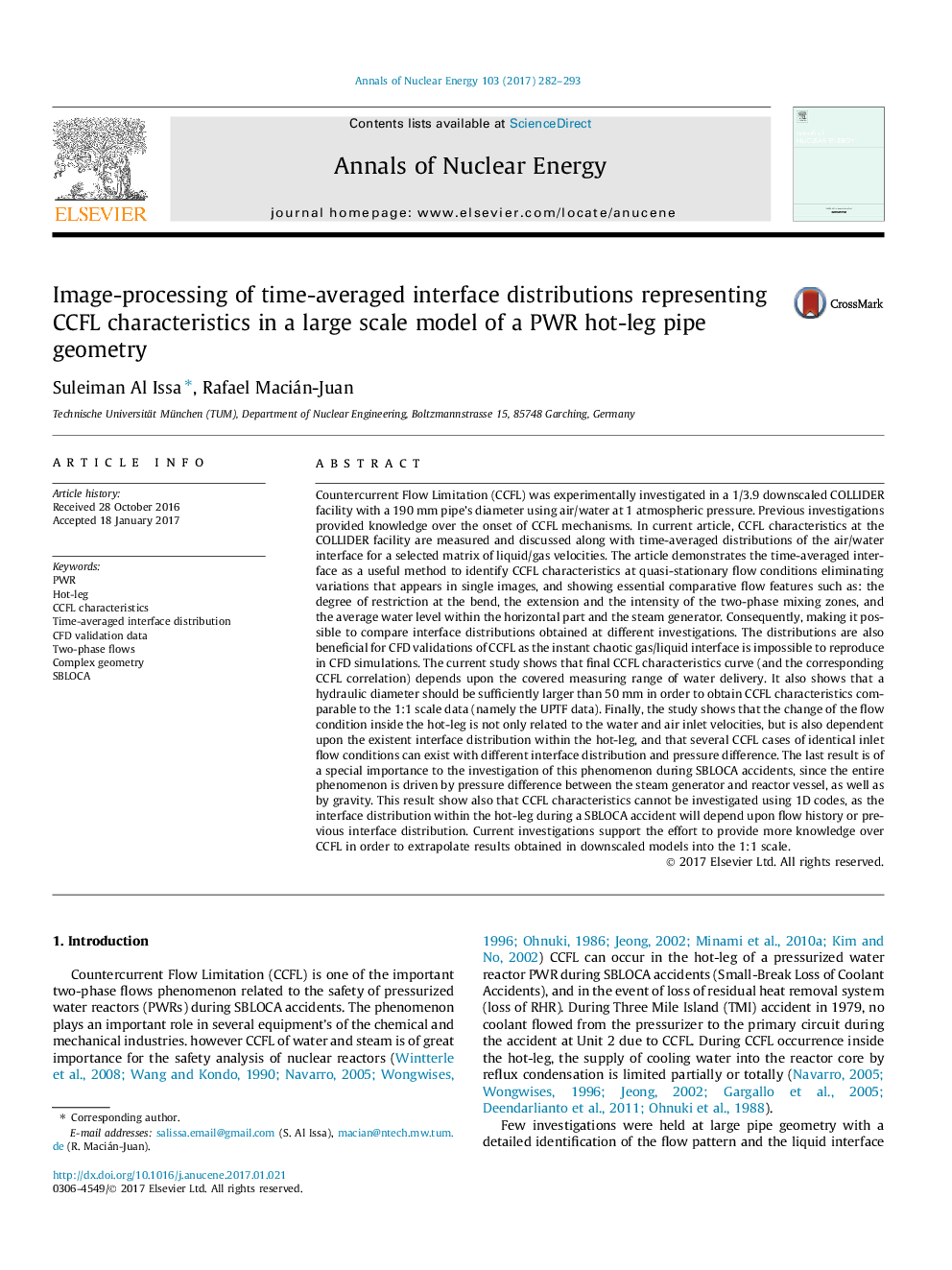| کد مقاله | کد نشریه | سال انتشار | مقاله انگلیسی | نسخه تمام متن |
|---|---|---|---|---|
| 5475224 | 1521093 | 2017 | 12 صفحه PDF | دانلود رایگان |
عنوان انگلیسی مقاله ISI
Image-processing of time-averaged interface distributions representing CCFL characteristics in a large scale model of a PWR hot-leg pipe geometry
دانلود مقاله + سفارش ترجمه
دانلود مقاله ISI انگلیسی
رایگان برای ایرانیان
موضوعات مرتبط
مهندسی و علوم پایه
مهندسی انرژی
مهندسی انرژی و فناوری های برق
پیش نمایش صفحه اول مقاله

چکیده انگلیسی
Countercurrent Flow Limitation (CCFL) was experimentally investigated in a 1/3.9 downscaled COLLIDER facility with a 190Â mm pipe's diameter using air/water at 1 atmospheric pressure. Previous investigations provided knowledge over the onset of CCFL mechanisms. In current article, CCFL characteristics at the COLLIDER facility are measured and discussed along with time-averaged distributions of the air/water interface for a selected matrix of liquid/gas velocities. The article demonstrates the time-averaged interface as a useful method to identify CCFL characteristics at quasi-stationary flow conditions eliminating variations that appears in single images, and showing essential comparative flow features such as: the degree of restriction at the bend, the extension and the intensity of the two-phase mixing zones, and the average water level within the horizontal part and the steam generator. Consequently, making it possible to compare interface distributions obtained at different investigations. The distributions are also beneficial for CFD validations of CCFL as the instant chaotic gas/liquid interface is impossible to reproduce in CFD simulations. The current study shows that final CCFL characteristics curve (and the corresponding CCFL correlation) depends upon the covered measuring range of water delivery. It also shows that a hydraulic diameter should be sufficiently larger than 50Â mm in order to obtain CCFL characteristics comparable to the 1:1 scale data (namely the UPTF data). Finally, the study shows that the change of the flow condition inside the hot-leg is not only related to the water and air inlet velocities, but is also dependent upon the existent interface distribution within the hot-leg, and that several CCFL cases of identical inlet flow conditions can exist with different interface distribution and pressure difference. The last result is of a special importance to the investigation of this phenomenon during SBLOCA accidents, since the entire phenomenon is driven by pressure difference between the steam generator and reactor vessel, as well as by gravity. This result show also that CCFL characteristics cannot be investigated using 1D codes, as the interface distribution within the hot-leg during a SBLOCA accident will depend upon flow history or previous interface distribution. Current investigations support the effort to provide more knowledge over CCFL in order to extrapolate results obtained in downscaled models into the 1:1 scale.
ناشر
Database: Elsevier - ScienceDirect (ساینس دایرکت)
Journal: Annals of Nuclear Energy - Volume 103, May 2017, Pages 282-293
Journal: Annals of Nuclear Energy - Volume 103, May 2017, Pages 282-293
نویسندگان
Suleiman Al Issa, Rafael Macián-Juan,